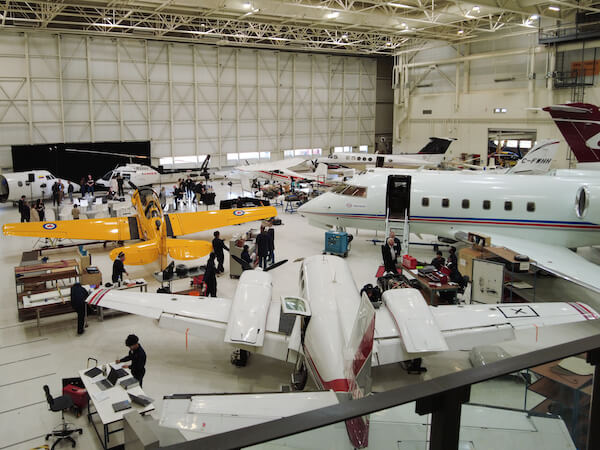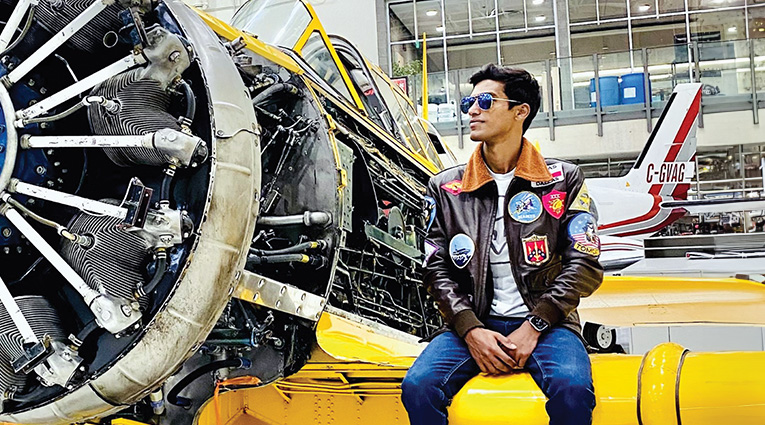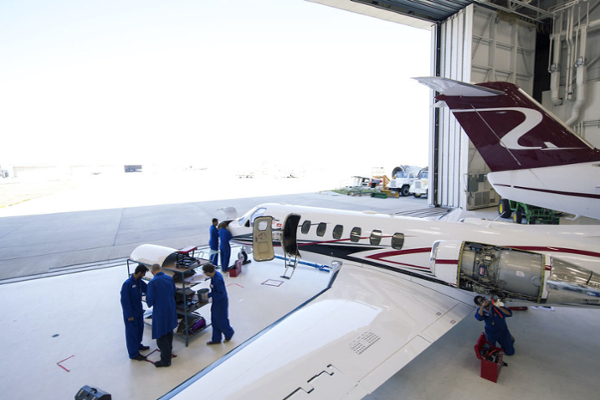Our history in aviation
After being previously put on hold by the events of WWII, public training and classes resumed at the campus on North Hill, and the aviation program became a three-year Aeronautical Engineering program.
As the modern era of aviation took hold, and the industry began to grow in Canada, SAIT introduced two new programs, the Aircraft Maintenance Technology program (present-day Aircraft Maintenance Engineers Technology) in 1957 and Avionics Technology in 1975, to help meet industry demand.
In 1996, in response to a need defined by the Department of National Defense, another aviation program was added: Aircraft Structures Technician. The addition of this program completed the evolution to the programs offered by the School of Transportation.
With successful programs and recognition of a future labour shortage, SAIT took the lead in responding to industry demand for more aviation maintenance graduates and sought assistance in developing a new aviation campus at the Calgary International Airport.
After years of planning and with the collaborative support of the Alberta Provincial Government, the Government of Canada, the City of Calgary, the Calgary International Airport Authority, and industry partners, a new facility, the Art Smith Aero Centre for Training and Technology, was built on land connected to Taxiway "N," a celebrated jewel in SAIT's crown.
Our facilities
Art Smith Aero Centre
 Globally recognized for aviation training, students from all over the world come to learn at SAIT’s Art Smith Aero Centre. Occupying 13 acres of land at the Calgary International Airport and connected to Taxiway N, the centre is accessible by private vehicle, public transportation or air.
Globally recognized for aviation training, students from all over the world come to learn at SAIT’s Art Smith Aero Centre. Occupying 13 acres of land at the Calgary International Airport and connected to Taxiway N, the centre is accessible by private vehicle, public transportation or air.
The centre includes:
- seven state-of-the-art classrooms
- study areas
- a full cafeteria
- a 21,000 square foot hangar
- 13 labs, including sheet metal, composite material, gas turbine, avionics, helicopter, reciprocating engine, and computer labs.
Along with impressive labs where you can learn about the mechanical, electrical and structural components of aircrafts, the space also has corporate facilities and shared classroom space, creating opportunities for industry to conduct its own training or participate in joint training.
The centre is designed and operated to meet industry and SAIT standards, emphasizing exceptional classroom and hands-on training that mimics what you will experience as a graduate.

The need for aviation professionals has tripled in the last 20 years and I don’t see a slowdown any time soon.
Lynda Holden, Dean, School of Transportation

Our programs
Aircraft Maintenance Engineers Technology
Diploma
International applicants accepted
Train to service and repair all types of airplanes and helicopters with the opportunity to obtain your Aircraft Maintenance Engineer (AME) license.
Aircraft Maintenance Engineers Technology
Aircraft Structures Technician
Certificate
International applicants accepted
Study for a career as an aircraft repair or structures technician, leading up to your Aircraft Maintenance Engineer license, through this program that teaches the modification and repair of aircraft, helicopters and their structural components.
Aircraft Structures Technician
Avionics Technology
Diploma
International applicants accepted
Earn your Aircraft Maintenance Engineer (AME) license by learning to repair and maintain the electrical and electronic systems in all types of airplanes and helicopters.
Professional Remotely Piloted Aircraft Systems New program!
Certificate
Not open to international applicants
Gain specialized professional skills to become a drone pilot in this emerging field with application to various industries.
Contact us
Art Smith Aero Centre
1916 McCall Landing NE
Calgary, Alberta
T2E 9B5
-
Phone - 403.284.7018
-
Email - aerocentre@sait.ca
-
Monday - Friday | 6 am - 9 pm | Saturday and Sunday | 6 am - 6 pm
Transportation

Oki, Âba wathtech, Danit'ada, Tawnshi, Hello.
SAIT is located on the traditional territories of the Niitsitapi (Blackfoot) and the people of Treaty 7 which includes the Siksika, the Piikani, the Kainai, the Tsuut’ina and the Îyârhe Nakoda of Bearspaw, Chiniki and Goodstoney.
We are situated in an area the Blackfoot tribes traditionally called Moh’kinsstis, where the Bow River meets the Elbow River. We now call it the city of Calgary, which is also home to the Métis Nation of Alberta.
